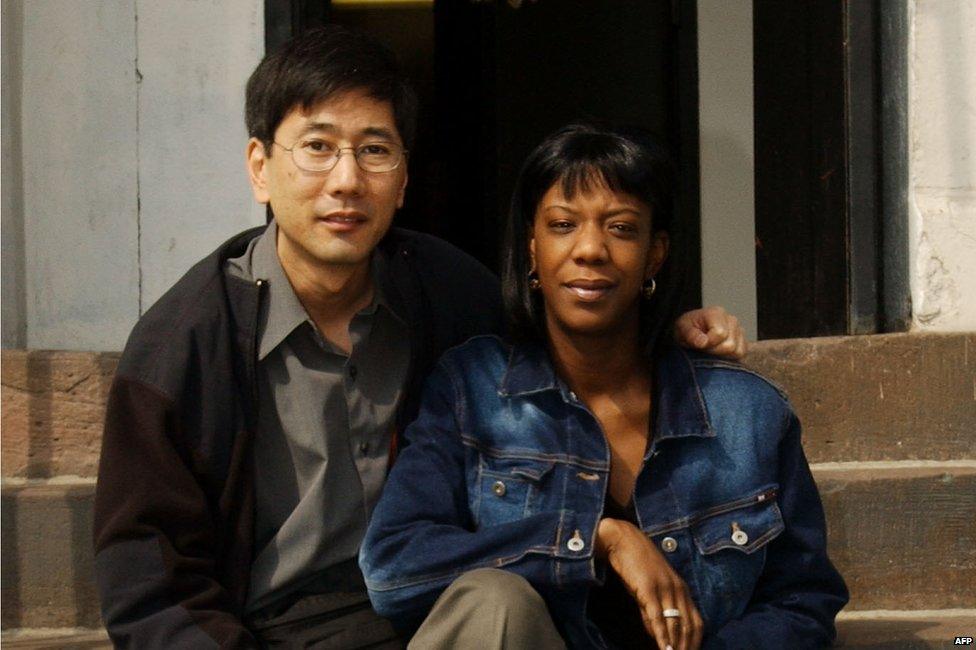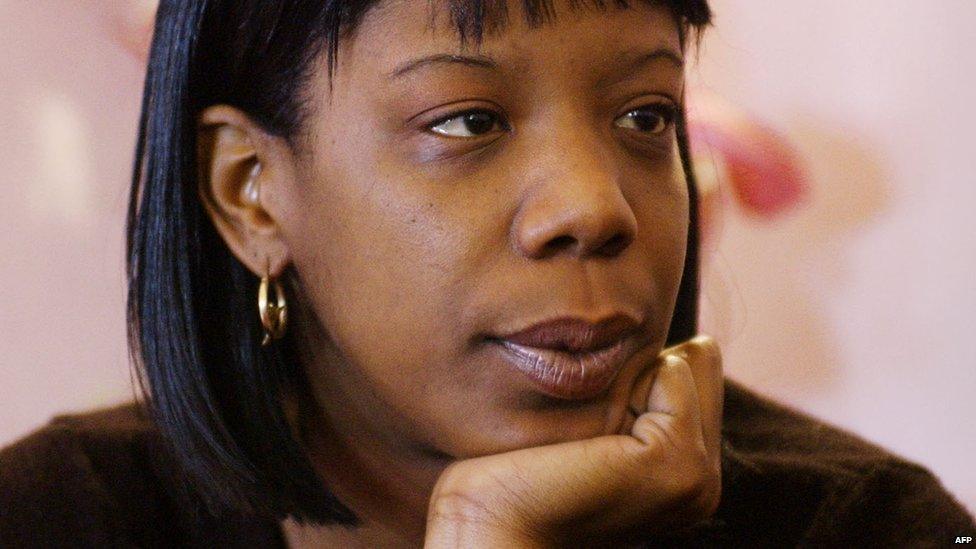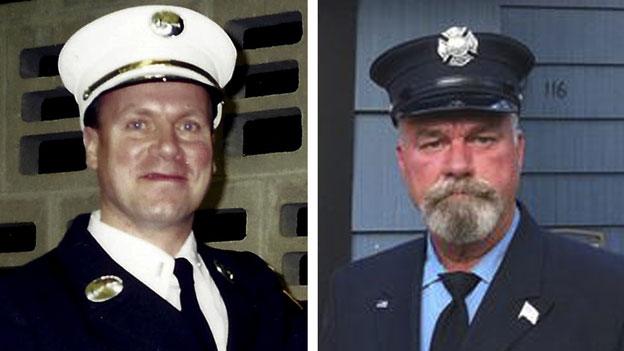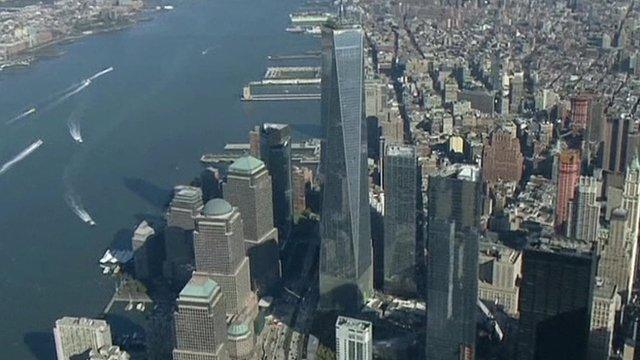'Dust lady' of 9/11 Marcy Borders dies of cancer at 42
- Published

Marcy Borders was 28 when she was photographed on 9/11
A 9/11 survivor whose photograph became one of the enduring images of the terrorist attacks has died aged 42, following a year-long battle with stomach cancer.
Marcy Borders became known as the "dust lady" after the image showed her covered from head to toe as she escaped the World Trade Centre.
Ms Borders, a mother of two, suffered from alcoholism and anxiety in later years and blamed her cancer on the dust she inhaled that day. She died on Monday, her family said.
"I can't believe my sister is gone," her brother Michael Borders wrote on Facebook. Her cousin John Borders called her a "hero" and said she had "succumbed to the diseases that [had] ridden her body since 9/11".
"In addition to losing so many friends, co-workers and colleagues on and after that tragic day ... the pains from yesteryear have found a way to resurface," he said.
On 11 September 2001, Ms Borders was just one month into a new job at Bank of America on the 81st floor of the north tower when the plane hit.
"The building started quaking and swaying. I lost all control, and I went into a frenzy. I fought my way out of that place," she told the Daily Mail in 2011.
Defying instructions from her boss to stay put, she fled down the stairway and into the lobby of an adjacent building where she was photographed by Stan Honda.

Photographer Stan Honda met and interviewed Ms Borders after the attacks
Mr Honda, a professional photographer, recalled the moment in a post on Facebook, external on the 10th anniversary of the attacks:
"A woman came in completely covered in grey dust. You could tell she was nicely dressed for work and for a second she stood in the lobby. I took one shot of her before the police officer started to direct people up a set of stairs, thinking it would be safer off the ground level."
Ms Borders, who was from New Jersey, was not aware she had been photographed until her mother saw the image the following day and contacted Mr Honda.
In the years after the attacks, as the picture became one of the most well-known taken that day, Ms Borders suffered from severe depression and drug addiction and lost custody of her two children.
"I didn't do a day's work in nearly 10 years and by 2011 I was a complete mess," she told The New York Post later the same year.
But after a spell in rehab starting in April that year, she became sober and regained custody. Ms Borders' daughter Noelle told the New York Post on Wednesday her mother "fought an amazing battle".
"Not only is she the 'Dust Lady' but she is my hero and she will forever live through me," she said.

Ms Borders described suffering from anxiety and depression in the years after the attack
In November 2014, Ms Borders revealed that she had stomach cancer and said she believed the illness was a result of her experience in 2001. "I definitely believe it because I haven't had any illnesses," she told US newspaper the New Jersey Journal. "I don't have high blood pressure ... high cholesterol, diabetes."
"How do you go from being healthy to waking up the next day with cancer?"
Thousands of people who were at Ground Zero that day have been since diagnosed with cancer, but medical officials have not confirmed a direct link between the conditions and the attacks.
Stomach cancer is one of more than 50 conditions covered by the James Zadroga 9/11 Health and Compensation Act, signed into law by Barack Obama in 2010.
The act provided a $2.78bn (£1.77bn) fund to compensate survivors and first responders for related health problems.
- Published26 September 2014

- Published4 November 2014

- Published22 May 2015
